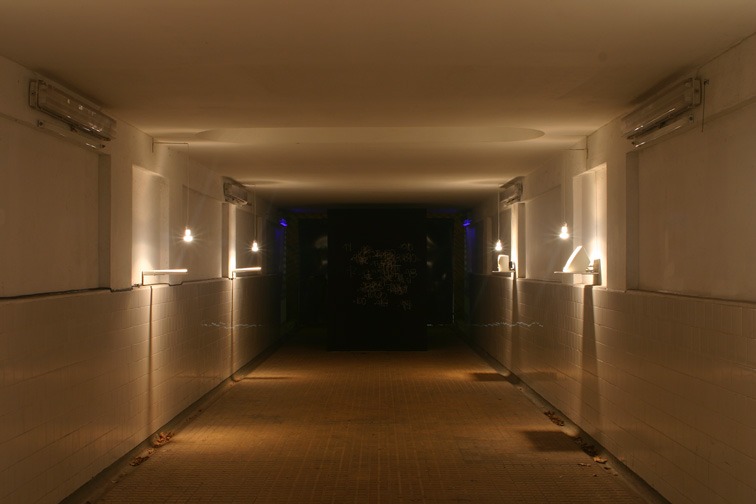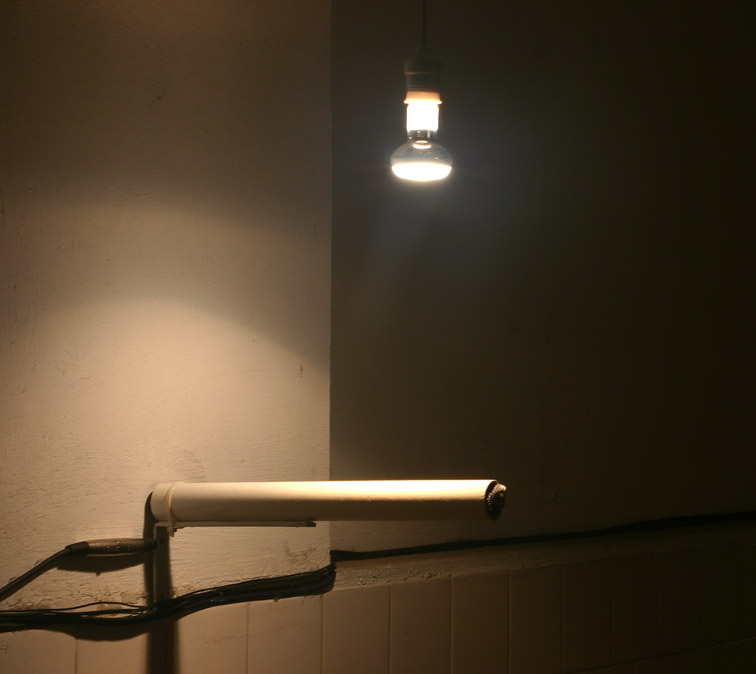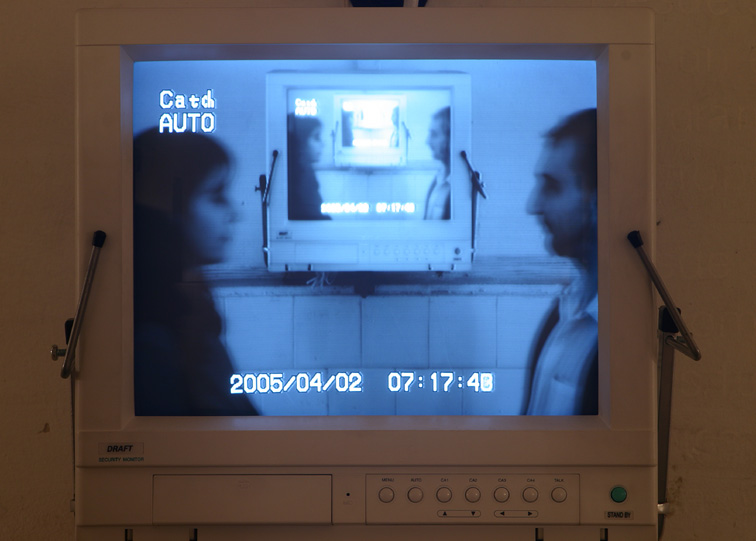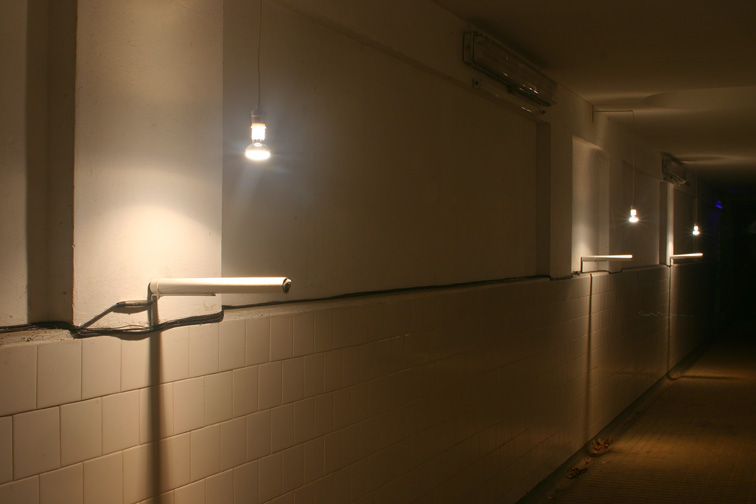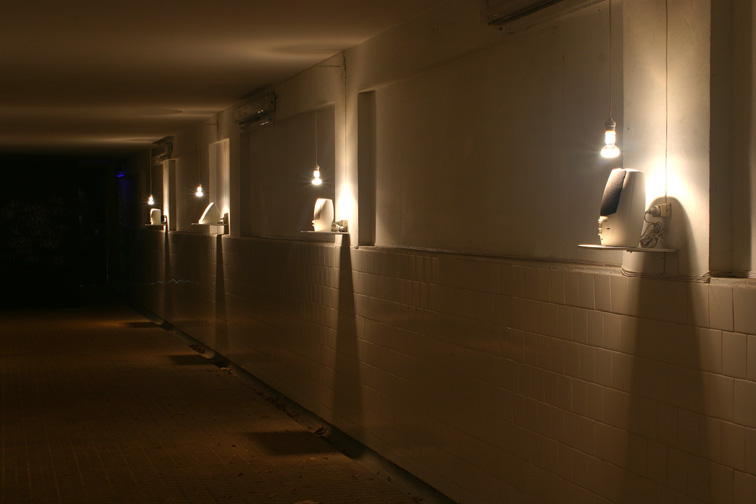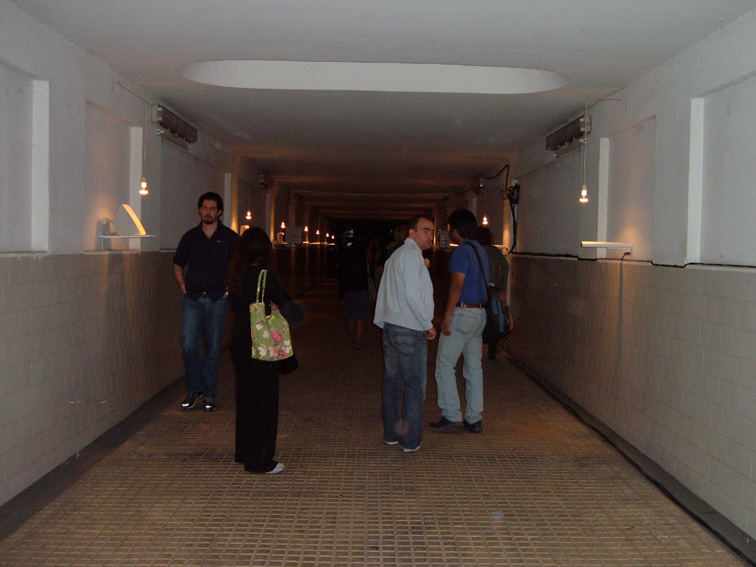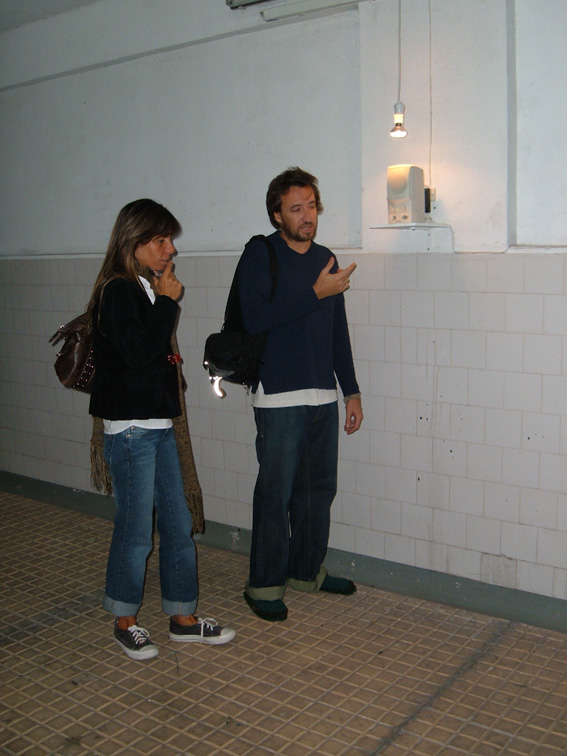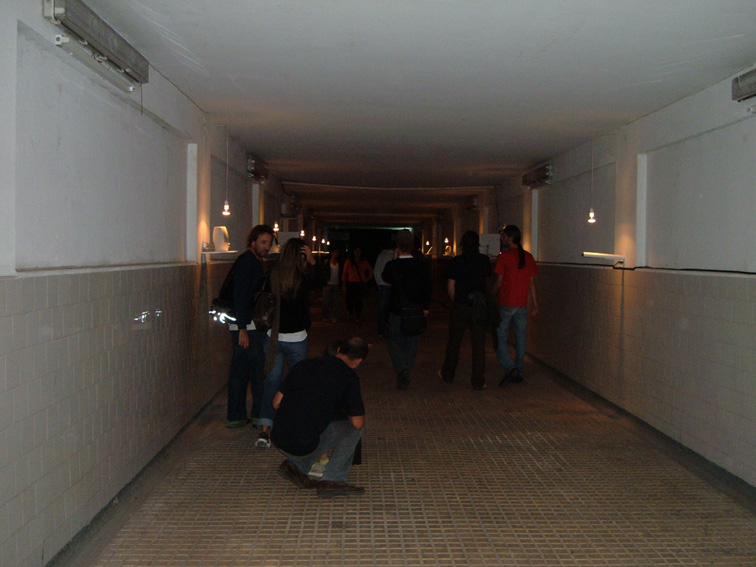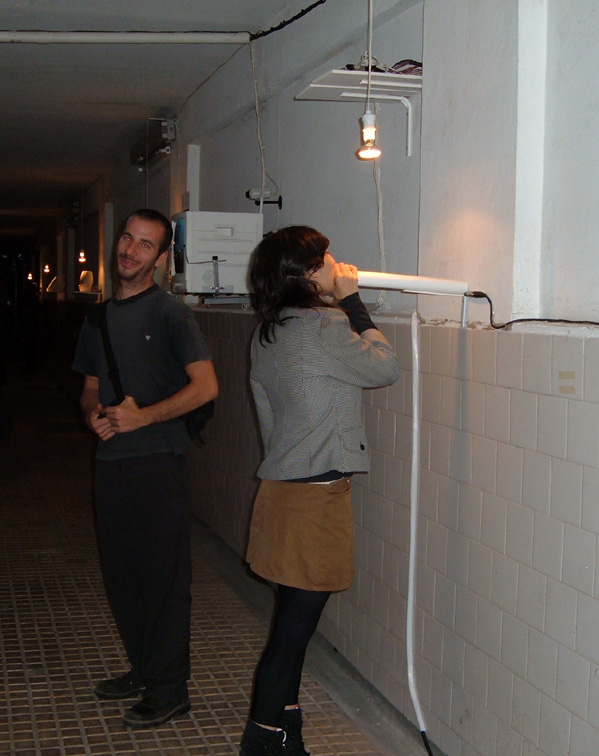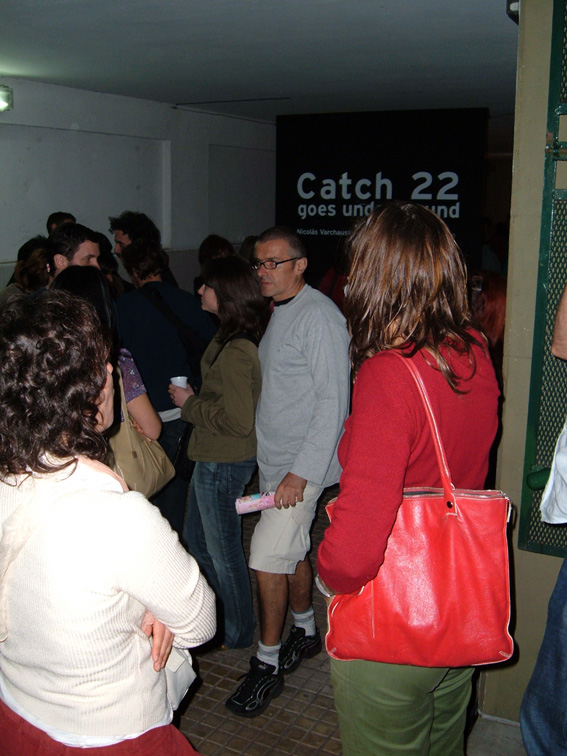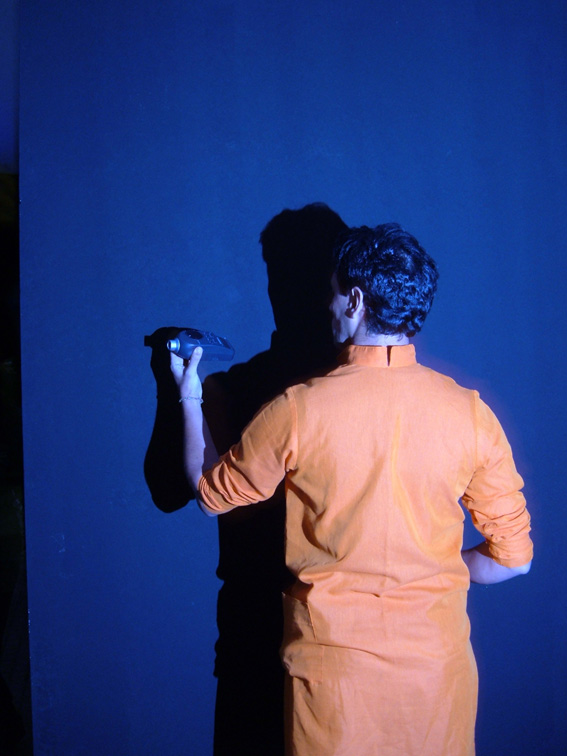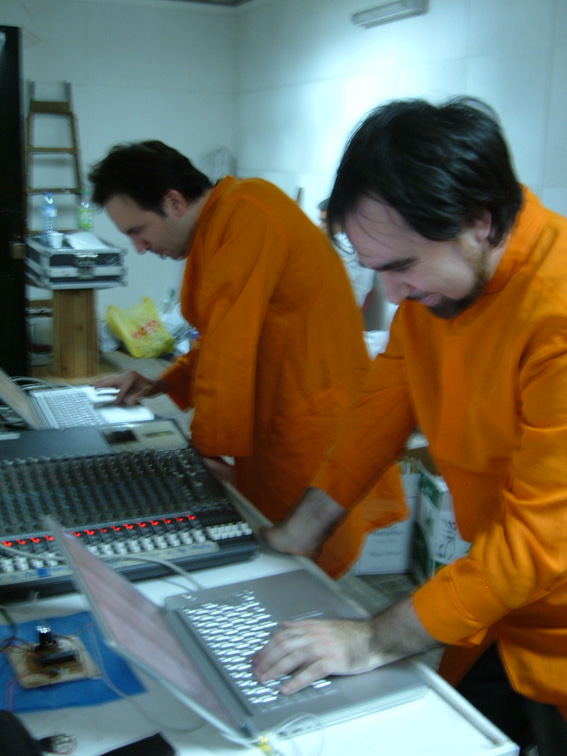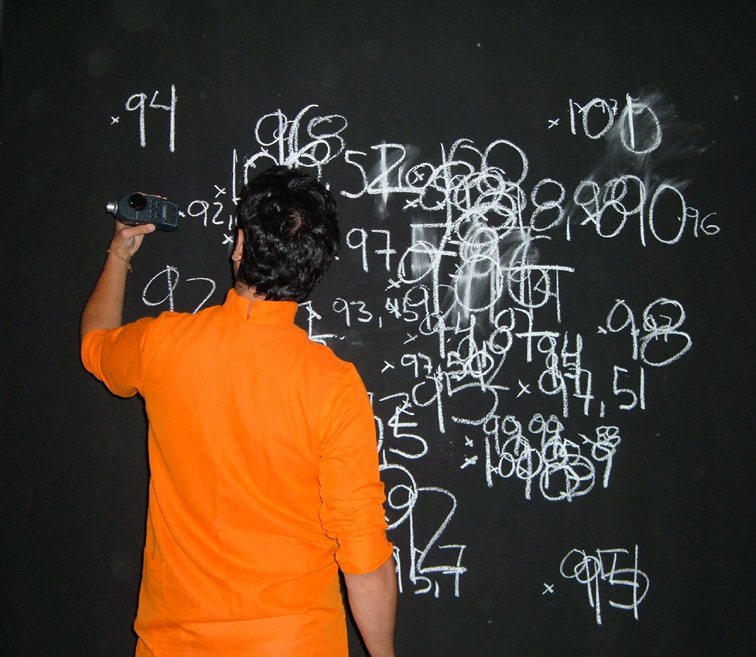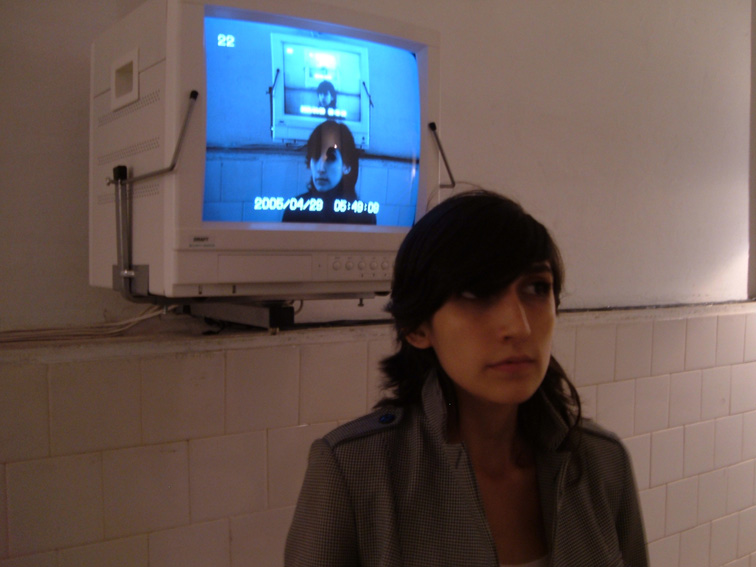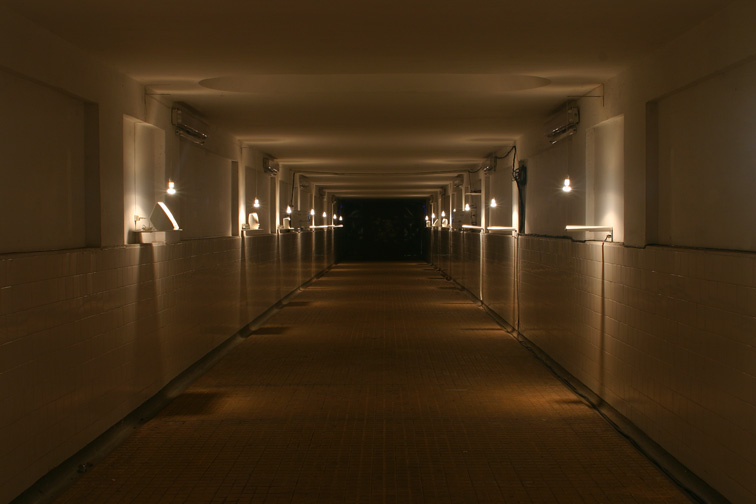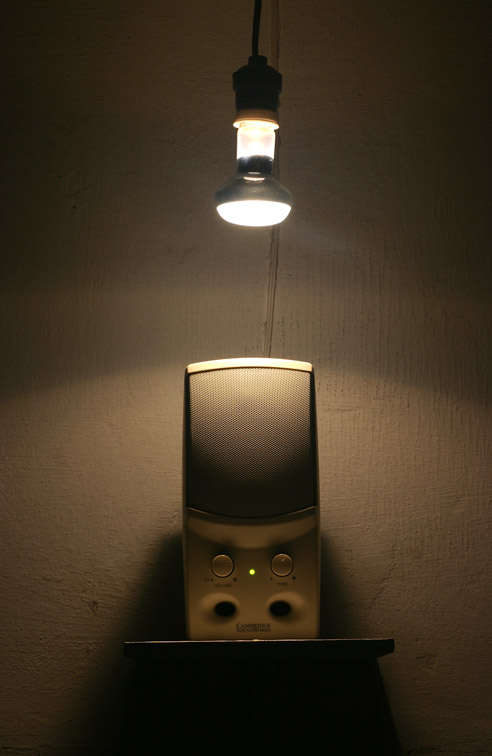Catch 22 goes underground (2005) |
|
site-specific sound installation |
 |
| "Catch 22 goes underground" continues the saga opened by Catch 22 degree zero applying the concepts of feedback and recursion to a specific site to transform its acoustics. A 50-meter long public underpass is transformed into a sonic chamber using controlled feedback. People in transit through the tunnel can experience how their body interacts with the system also changing the acoustics of the place. |
| Details | |||||||||||||||||
| Exhibited |
Cruce de Artes, Buenos Aires, from March 29 to April 29 2005. |
||||||||||||||||
Commission |
City of Buenos Aires (Dirección General de Museos), Horacio Torres, curator. | ||||||||||||||||
Description |
"Catch 22 goes underground" was done in collaboration with composer Nicolas Varchausky and visual artist Daniel Trama. The piece was created applying the concepts of feedback and recursion to a specific site to transform its acoustics. The selected site was a 50-meter long underpass in Buenos Aires, which runs under a 6-way avenue and connects the Zoo with a large urban park in a nodal traffic point of the city. Eight speakers and microphones were deployed along the tunnel, facing each other to generate feedback. Each speaker-microphone pair was set at the height of a human head or torso, making it possible for people to interfere the feedback loop with their body. Visitors to the installation -or the unaware passer-by- could experience how their presence in the tunnel alter the system and, by doing so, the acoustics of the site. Feedback loops were controlled individually with a computer to avoid infinite loudness growth, and to transform their sound, creating some sort of electronic feedback choir in perpetual state of instability. Movement sensors set at each end of the tunnel triggered changes in the system as people entered the installation; changes were set to gradually propagate from the opposite end of the tunnel towards the visitor's location. Right in the middle of the tunnel, two surveillance cameras and monitors connected in a loop built a visual analogy to the sonic experience. This absurd surveillance system constantly displayed the back of people facing it, making it impossible for visitors to see their faces on the monitors. Finally, "Catch 22 goes underground" could be interpreted as a complex musical instrument or soundscape. The characteristics of the site -having both ends open to outdoor urban spaces- made it possible for the system to react to ambient sound in an organic way, incorporating the sound of wind, voices, traffic, planes, birds, etc. to the sonic environment of the tunnel. We took advantage of this "performable" aspect of the system during the opening night of the installation "playing" an improvised set from the control booth using two networked laptops. During the performance, two members of the team sensed the sound pressure level at each end of the tunnel writing decibel values down with chalk on the back of the entrance walls. |
||||||||||||||||
Technology |
The system involved in "Catch 22 goes underground" consisted of a main computer controlling eight channels of sound. Each of these input-output pairs set a feedback loop which was controlled by means of compression, pitch shifting, and filtering. Up to 30 parameters could be adjusted on each channel of the system; parameter presets were stored in memory and retrieved automatically by the system when movement was sensed at the entrances of the tunnel, triggering a gradual change of parameters in all channels starting from the ones at the opposite end from the triggered sensor. If no movement was sensed within one or two minutes, the system would gradually change one of the channels to a new set of parameters and then randomly rotate among channels until all of them got new presets. In both cases the whole transformation process could take several minutes or could be interrupted by a new sensor trigger. Due to the site specific aspect of the installation (it was located in public space), it was required to make it completely autonomous, turning itself off at night and turning itself on in the morning (the underpass is closed from 11PM to 6AM). This posed a particular challenge since the feedback system needed to be turned on gradually and calibrated to avoid distortion and annoying sound pressure levels. This was achieved with a self-calibration algorithm which adjusted all channels gradually to their optimal levels every morning, right after the computer automatically woke up from sleep. |
||||||||||||||||
Credits |
Center for Digital Arts and Experimental Media (DXARTS), University of Washington. |
||||||||||||||||
| Documentation | |||||||||||||||||
Photos |
| ||||||||||||||||
Left to Right (click to enlarge images): [1] Installation view from center of the underpass to west entrance [2] Microphone detail [3] Surveillance monitor [4] Microphones wall [5] Speakers wall [6] Installation view with visitors from east side [7] Visitors interacting with the system [8] Installation view with visitors from west side [9] Visitors interacting with the system [10] Installation west entrance [11] Performance: SPL sensing at east end [12] Performance: improvisation from control booth [13] Performance: SPL sensing at west end [14] Surveillance system detail [15] Installation view [16] Speaker detail |
|||||||||||||||||
Video |
Opening night video of the installation showing a passage through the tunnel (by Fernando Goin)
|
||||||||||||||||
Audio |
Location recording of the installation. Traveling shot from the west entrance to the middle of the tunnel Location recording of the installation. Fixed shot at the east entrance of the tunnel Location recording of the installation. Traveling shot from east to west entrance |
||||||||||||||||
Press |
Review of the installation by Ciudad Internet (electronic magazine of Clarín newspaper).
|
||||||||||||||||
© 2007-2010 Juan Pampin, All Rights Reserved. |
|||||||||||||||||
